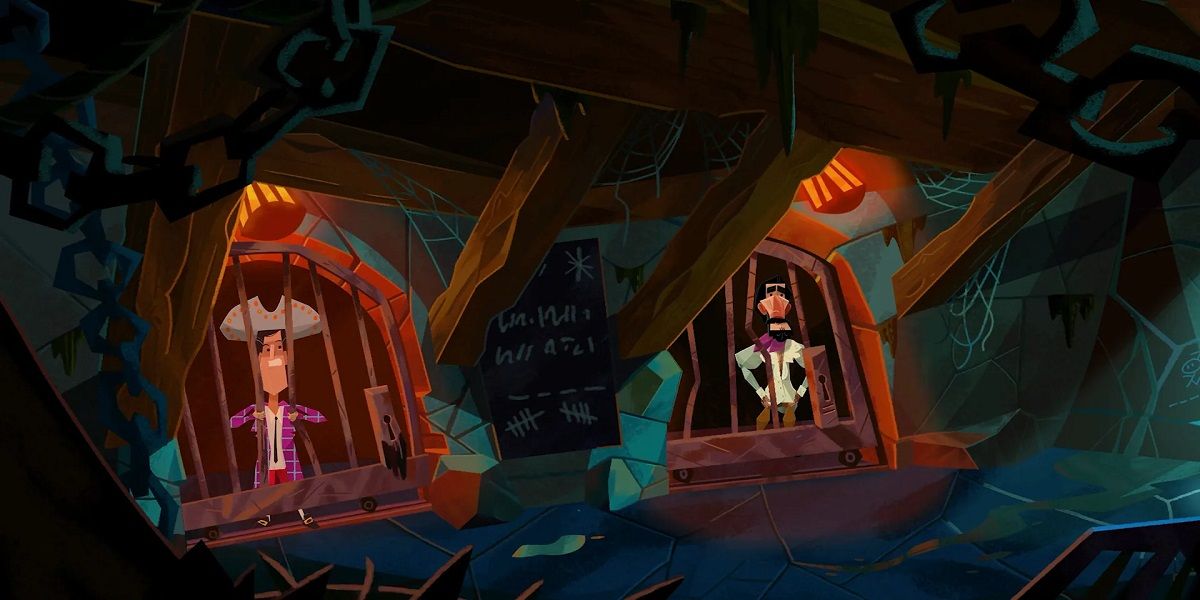Members of the gaming community are almost universally passionate. Regardless of genre, franchise, or format, gamers are always keen to see their opinions aired in this age of instant social media, comment sections, conventions, and studio-user interaction. While many of these passions are directed in a positive, construction way, there are still those who feel that their love and reverence for a particular game or franchise is free license to say what they want and in whatever manner they wish to say it. The upcoming point-and-click adventure release Return to Monkey Island has been a prime case in point of this overzealous sharing of opinion.
Reaction to Return to Monkey Island thus far has been mostly positive as long-term fans await the return of Guybrush Threepwood and his surreal adventures in the pirate-infested Caribbean. However, a number of negative reactions, particularly with regard to the teased artistic design, have left a bad taste in many mouths. In fact, the game's director, Ron Gilbert, has been forced to stop posting updates on his personal blog as a result of unsavory, often personal instances of criticism and abuse.
While personal attacks can never be justified in any case, those who have expressed their displeasure at Return's bold new visual style needn't be so histrionic. Instead of representing a betrayal of the original games, and by implication their longstanding fanbase, the decision to bring in esteemed visionary Rex Crowle has been a necessary, perhaps even inspired decision. In order for a franchise to grow, even one that has taken such a long hiatus, there is a need to innovate and try new things in order for things to remain fresh and interesting to both an established and a new audience.
Put simply, Return required a new visual aesthetic in order to distinguish itself from its predecessors. Returning to the old pixilated rendering of the '90s originals was never going to be a legitimate option, and while the first two games' remasters do an excellent job of reinvigorating a pair of classics, using a remastered style on a new game would seem confusing and anachronistic. The goofier, more cartoony styles of later entries, such as The Curse of Monkey Island and Tales from Monkey Island, meanwhile, wouldn't likely fit with a game that is trying to establish its own identity, especially considering the fact that later sequels didn't feature the input of many of the figures who are coming back for Return, including Tim Schafer, Dave Grossman, and Ron Gilbert himself.
Contextual necessities aside, the artwork for Return to Monkey Island seems like a perfect fit. The angular, slightly wonky aesthetics of Crowle's distinctive style seem like the perfect accompaniment to the madcap adventures of Guybrush and friends. It's a hugely fitting aesthetic for a series featuring oddball pirates, ghostly figures, and the surreal goings-on of the lawless Caribbean. Great art should complement the game or medium that it accompanies, and this new creative direction looks set to give some established characters a new lease on life.
Rex Crowle is certainly a man to be trusted in this department. Crowle's work on games such as Tearaway Unfolded and Knights and Bikes is more than enough testament to the polish, flair, and vision the artistic director and his team bring to every project on which they work. In fact, Gilbert has stated that he and his fellow creatives at Terrible Toybox had specifically selected Crowle for the task, calling him an "amazing creative force." With a new artistic director at the helm, Gilbert is staying true to his promise that Return to Monkey Island will, in more ways than one, prove to be "provocative, shocking, and not what everyone was expecting."
The problem with any established or beloved property, even one that has laid dormant for as long as the Monkey Island series, is that people have a set and established view of how such a property should look, feel, and even sound. In the same way that audiences become accustomed to actors assuming a certain role or musicians using certain motifs, gamers expect a consistency between installments that acts as a bridge from one entry to the next. The problem is that such ingrained, unmoving expectations can mean that many loyal devotees become unable to accept changes, even when those changes are for the creative good.
Gilbert has made it clear that Return to Monkey Island isn't explicitly going to be what fans asked for, and his devotion to making the game he and his team want to make, rather than that which others expect of him, is the best choice of action. Games that pursue only fan service usually end up pleasing no one. Instead, Return to Monkey Island is forging its own identity, and part of that entails taking up a new visual style. If teaser information is anything to go by, there's little chance of the heart and soul of the franchise being discarded. A new look can be just the step in the right direction the series needs.



